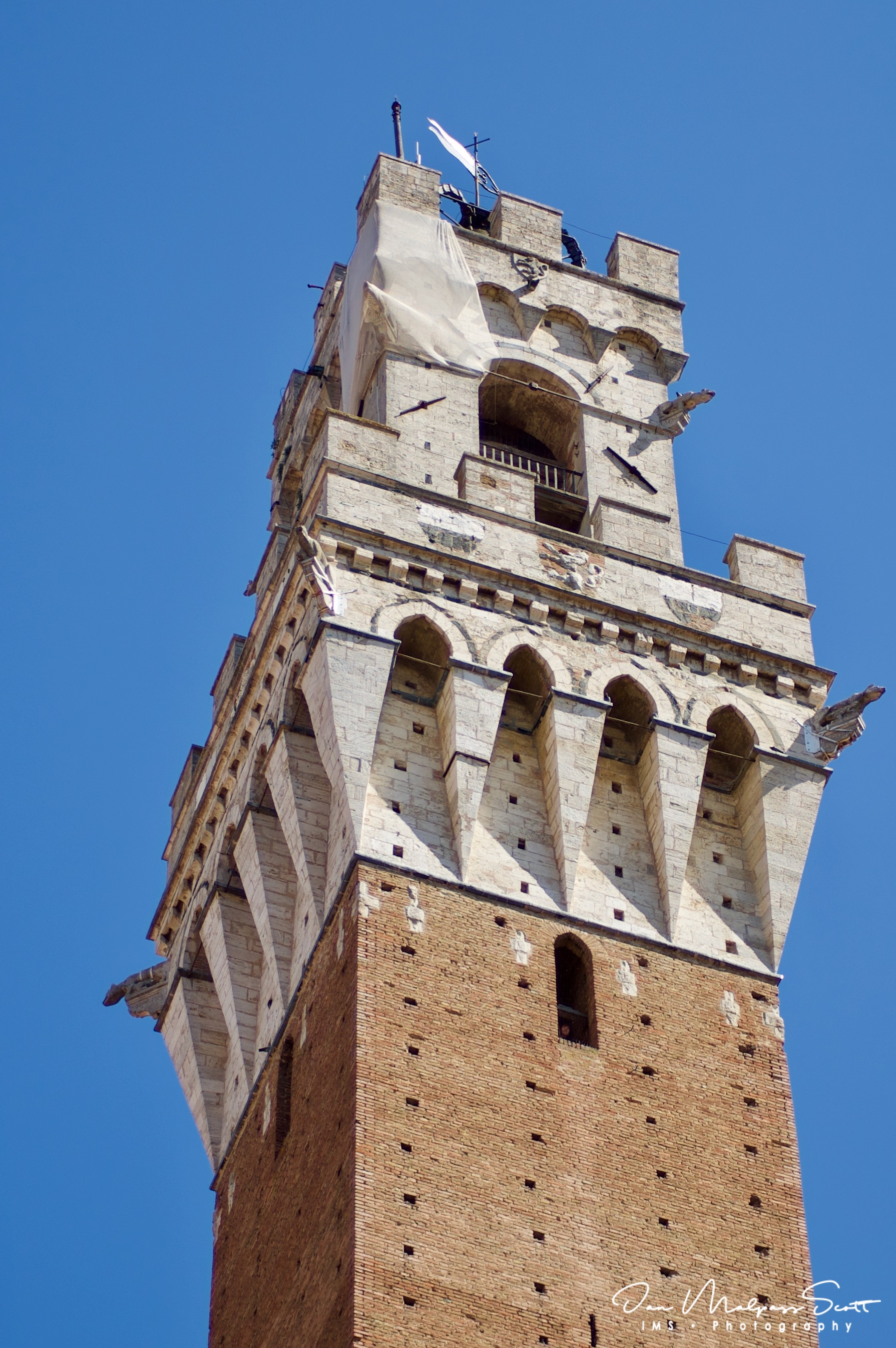The Torre del Mangia is a tower in Siena, in the Tuscany region of Italy. Built in 1338-1348, it is located in the Piazza del Campo, Siena’s premier square, adjacent to the Palazzo Pubblico (Town Hall). When built it was one of the tallest secular towers in medieval Italy. At 102 m, it is second tallest after Cremona’s Torrazzo (112 m (367 ft)) the Asinelli tower in Bologna at 97 m being third.
The tower was built to be exactly the same height as the Siena Cathedral as a sign that the church and the state had equal amounts of power.
Literally meaning ‘Tower of the Eater’, the name refers to its first bellringer, Giovanni di Balduccio, nicknamed Mangiaguadagni (‘eat-the-profits’, or, ‘profit eater’) for his spendthrift tendency or his idleness or gluttony.
The tower has visually distinct levels, from the top:
a short pale-gray upper loggia
a marble (uppermost) structure.
a stone section that flares out slightly
a long red brick shaft
The marble loggia on the top, known as Cappella di Piazza, was added in 1352 as a vow for the Holy Virgin by the Sienese survivors from the Black Death. The pilaster were remade in the current form in 1378, the sculptures decorating them being executed in 1378-1382 by Mariano d’Angelo Romanelli e Bartolomeo di Tommé. The simple wooden ceiling once covering the loggia was replaced by the current Renaissance marble vault in 1461-1468 by Antonio Federighi, also author of the bizarre decorations of the coronation. In 1537-1539 Il Sodoma painted a fresco over the altar, now housed in the town museum in the Palazzo Pubblico.
The upper-middle part in stone was realized by Agostino di Giovanni under design by one Mastro Lippo pittore, probably identifiable with Lippo Memmi. It consists of a parapet resting on corbels. The pronounced petal-like arches between the corbels have led writers to describe the structure as a tulip or lily.
The clock on the lower part of the shaft was added in 1360. There are three bells, the greatest one is called the “Sunto”.
The walls of the tower are approximately 3 m (9.8 ft) thick on each side.


